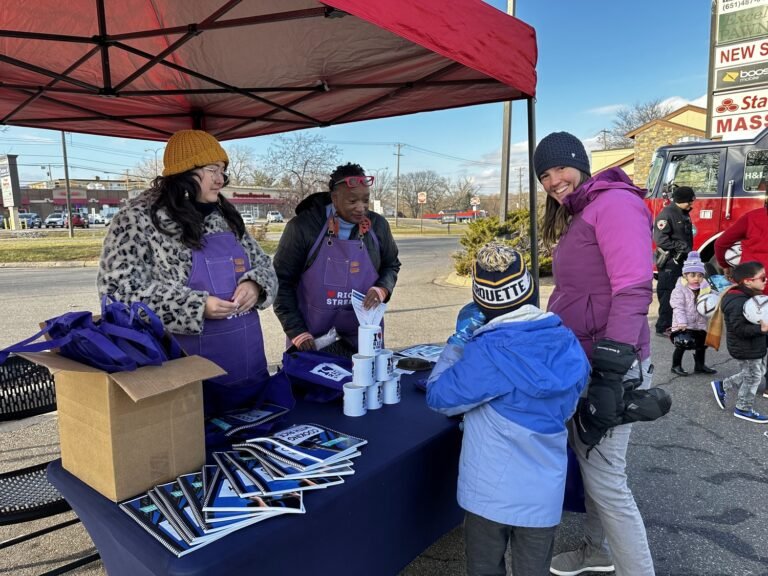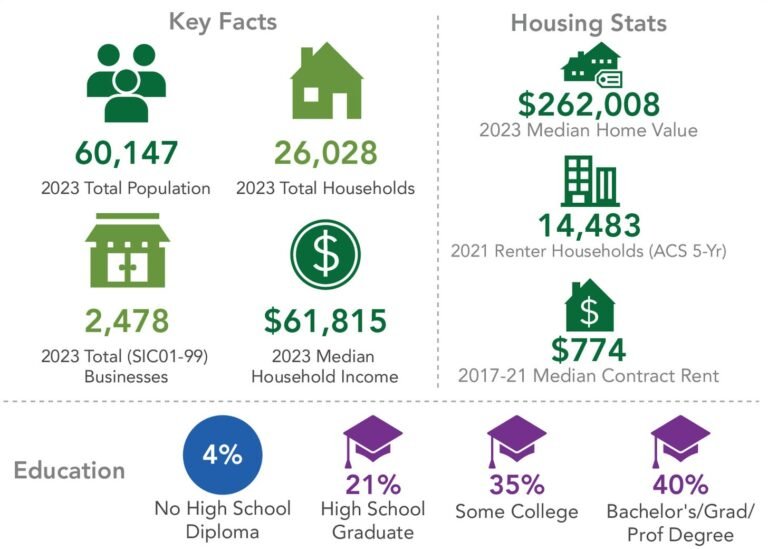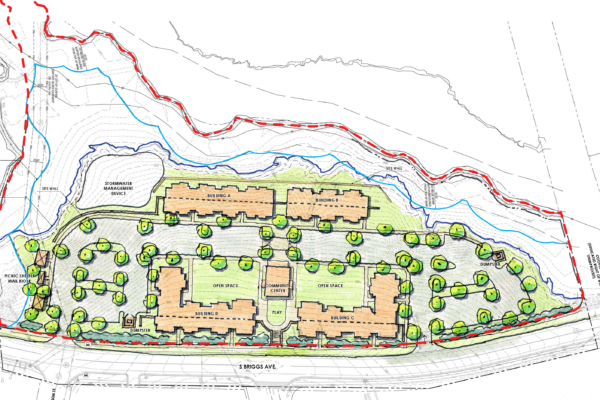Building Equitable Communities Through Affordable Housing
Opportunity Knocks: Building Equitable Communities Through Affordable Housing
Imagine you are an educator in North Carolina. You have a fulfilling career, your students are happy and thriving under your direction, but, as a single parent, you’re faced with an unyielding fear when you sit down to pay your bills each month. The cost of living keeps increasing with no end in sight. You’re barely making ends meet as it is and not only can you not afford to live comfortably, but you are concerned you have been priced out of the community you live, work, and play in.
This is the plight of many North Carolinians. In the rapidly growing Southeast, the right to secure, affordable housing is becoming more of a dream than reality. People are being displaced in their communities due to limited housing supply, increasing wealth and income disparities, rapidly rising rent and housing costs, and structural racial inequities.
Pairing these challenges with the ever-growing costs of materials, construction, and labor, many North Carolina residents are left with few options to sustain themselves and their families.
The first step to addressing and remedying the affordable housing crisis is to understand the unique challenges of each community. Safe, affordable housing should be a right for all citizens, and we can only begin to derive solutions when we break down the issues at hand and work together on a solution that benefits the community for generations to come.

Affordable Housing Crisis Factors
Though the affordable housing crisis is not new or limited to North Carolina, the state’s enormous economic growth in the past decade brought over one million new residents to the state, increasing the already scarce demand for housing. In North Carolina, extremely low-income households (ELI) are spending more than half of their income on housing. This means residents are forced to sacrifice access to healthcare, nutritious food, and other necessities to keep a roof over their heads and the lights on.
Research from the National Low Income Housing Coalition calculates the shortage of affordable housing as costing the United States economy approximately $2 trillion (about $6,200 per person in the US) per year in lower wages and productivity. People who identify as African American, Hispanic, as well as indigenous people, consistently make up the highest homeless population numbers. Veterans and seniors are also among those affected, with 22 out of 10,000 veterans experiencing homelessness and more than one in five people 55 or older.
Details in the Data
Using demographic and spatial data, communities can determine statistical factors contributing to the affordable housing shortage and work to geographically target investments that will most benefit residents in the current and long-term. Spatial analysis using tools like ArcGIS Business Analyst can form the data-driven foundations for projects, but it is critical that we listen to the voices of those served as well. Our engagement process, which meets constituents and project stakeholders where they are, is essential to project success.

For this reason, Bolton & Menk uses in-person conversations as well as technological solutions to gather input from residents. Several web-based GIS tools for engagement include INPUTiD™ for public comment, ArcGIS Story Maps for map-centric storytelling, and project-specific web maps for awareness and collaboration. Deploying this type of technology seeks to gather additional contextual information needed to make informed decisions about housing a community.

Making Affordable Housing a Reality
Everyone should have safe, secure, and reliable access to quality affordable housing, regardless of their income threshold. This vision becomes closer to reality through the Low-Income Housing Tax Credit (LIHTC), a crucial program and mechanism that incentivizes private investment in affordable housing.
Regionally, the LIHTC is most commonly obtained through the North Carolina Housing Finance Agency (NCHFA), in which the owner/developer enters a competitive process to obtain a tax credit (typically 9 percent) of the qualified cost of building the property. This lowers the amount of the property’s debt financing by exchanging the tax credits for equity investments from financial institutions.
In turn, the owners agree to keep rents affordable for a period between 15-30 years for families and individuals with incomes at or below 80 percent of the local median income. Without this incentive, these projects and the resulting benefits to the community would not be possible.
As a result, people gain access to safe, quality housing close to jobs, schools, and essential services, and communities benefit from improved economic stability, revitalized neighborhoods, and a more stable and equitable population.
Creating a Stable Future – Carolina Avenue Apartments
While there are broad economic and social needs for affordable housing in communities across North Carolina, often the need is exacerbated by one major catastrophic event. This was the case for the residents of Trent Court Apartments, a public housing project built in 1941 near historic Downtown New Bern, North Carolina sitting on the confluence of the Neuse and Trent Rivers. In September 2018, Hurricane Florence bombarded the town with more than 20 inches of rain, causing a 10-foot storm surge and over $100 million of damage to the city. The storm inundated the low-lying flood-prone site at Trent Court, rendering most of the units uninhabitable due to irreparable damage, and displacing hundreds of residents.
To build the community a long-term sustainable supply of high-quality affordable and workforce housing, the New Bern Housing Authority identified a 30-acre site near Trent Court, seven acres of which would become the site of the future Carolina Avenue Affordable Housing project to provide essential housing for the displaced residents and others in the community.
Through a rigorous and competitive application process, the project successfully secured NCHFA funding and was designed to create a safe and engaging community to meet the needs of individuals and families in New Bern. The program consisted of seven three-story garden-style apartments built to the same high-quality standards as new market-rate apartments. Catering to a diverse mix of families and individuals, the development includes well-appointed one, two, and three-bedroom units, energy-star rated fixtures, luxury vinyl plank flooring, private balconies, and community amenities including a community center, fitness center with technology lab, playground, sheltered grilling area, and other open space amenities.
Bolton & Menk provided planning, civil engineering and landscape architecture services for the project. Bringing more than 30 years of experience in the industry, the efforts were skillfully led by Brian Laux, Senior Civil Engineer from our Raleigh location.
One of the project’s most essential goals was to ensure that the new site would not succumb to the same fate as the Trent Court Apartments. The project team paid careful attention to ensure that durable flood-mitigation measures were met. Sited on a lower-elevation flat site, this required a significant amount of imported fill to guarantee the site remained at least 2 feet above the base flood elevation, as well as refined grading and stormwater control measures for the seasonal high-water table. This allowed for efficient drainage and retention, while also protecting the adjacent floodplain and jurisdictional wetlands.
Partnerships in Affordable Housing
A long-term partner of Bolton & Menk, the development group at Mosaic led by Senior Project Manager Jimmy Royster has a shared passion for creating safe, sustainable, and beautiful places, and was a highly collaborative and knowledgeable partner in the effort. As a specialist in Low-Income Housing Tax Credit (LIHTC) projects, Mosaic and the New Bern Housing Authority, and other stakeholders helped lead the efforts alongside our team to reach the shared goal of creating a sustainable legacy for an underserved population within the New Bern community.
The partnership with our community is arguably the most important of them all. “It’s just a very inviting place. I think what you’re doing is outstanding because a lot of housing is needed, very much so,” said one Carolina Avenue resident.
Investing in Durham’s Future
Inspired by the transformative impact and success of the Carolina Avenue project, our Raleigh team has begun preliminary design of two significant affordable housing projects located in the rapidly growing City of Durham, North Carolina.
The close partnership with Mosaic has continued with the Durham Tech Affordable Housing project, a 124-unit multifamily project near the Durham Technical Community College campus, which will serve as a catalyst to an area that is seeing rapidly rising housing costs and a lack of quality affordable and workforce housing.

The Fayette Place project, located within the historic African American district of Hayti, just south of burgeoning downtown Durham, will become one of the largest affordable and workforce housing developments in the city. Teamed with the Durham Housing Authority (DHA), Greystone Development Group, Moseley Architects, and other development and design partners, the project takes a context-sensitive, multi-phased and multi-scaled approach to create more than 500 housing units consisting of garden-style apartments, a 5-story wrap, age-restricted housing, adjacent retail/commercial space, and townhomes that provide a path to homeownership.
Images courtesy of Durham Community Partners
Bolton & Menk is providing a wide range of services for these projects from our integrated planning, engineering, landscape architecture, survey, and transportation teams. Both projects are currently underway in preliminary design phases, led by Jordan Petersen (Principal/Work Group Leader) and Brian Laux (Senior Civil Engineer) out of our Raleigh location.
Conclusion
The key to creating affordable housing solutions lies with community alliance and innovation. Engaging with the local community, sound client collaboration, and site-sensitive design strategies lends to our ability and passion for residential design that serves the well-being of all residents. With strong partnerships, innovative solutions, and a strong desire to involve and serve a community, we’re able to make affordable housing a reality again. Together, we can build a more equitable, affordable, and accessible future for generations to come.
 From conceptual design to final construction documents, Jordan Petersen brings a passion for creating resilient, economically successful, and socially engaging places. As a Principal Landscape Architect and Raleigh Work Group leader, his skills include project management, site analysis, conceptual design, construction administration, and more. Jordan has helped manage and design several successful projects throughout North Carolina since beginning his career in 2009. His diverse project portfolio includes master planning, public parks, streetscapes, urban infill, community design, and mixed-use developments. Jordan is a LEED-accredited professional and an active member of the Urban Land Institute (ULI) and the American Society of Landscape Architects (ASLA). Jordan enjoys creating sustainable, engaging, and inclusive public and private spaces for communities to enjoy and interact with.
From conceptual design to final construction documents, Jordan Petersen brings a passion for creating resilient, economically successful, and socially engaging places. As a Principal Landscape Architect and Raleigh Work Group leader, his skills include project management, site analysis, conceptual design, construction administration, and more. Jordan has helped manage and design several successful projects throughout North Carolina since beginning his career in 2009. His diverse project portfolio includes master planning, public parks, streetscapes, urban infill, community design, and mixed-use developments. Jordan is a LEED-accredited professional and an active member of the Urban Land Institute (ULI) and the American Society of Landscape Architects (ASLA). Jordan enjoys creating sustainable, engaging, and inclusive public and private spaces for communities to enjoy and interact with.

